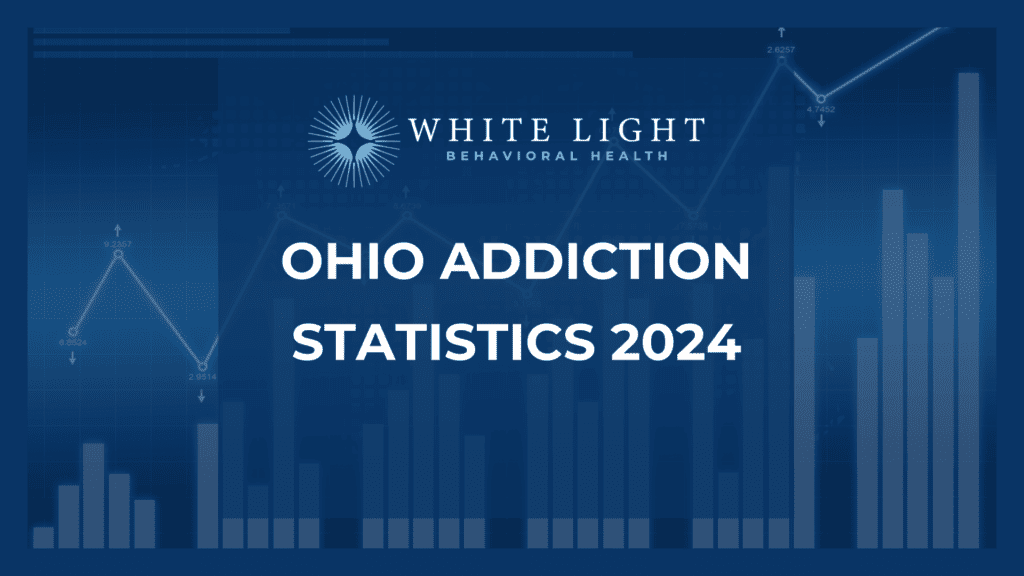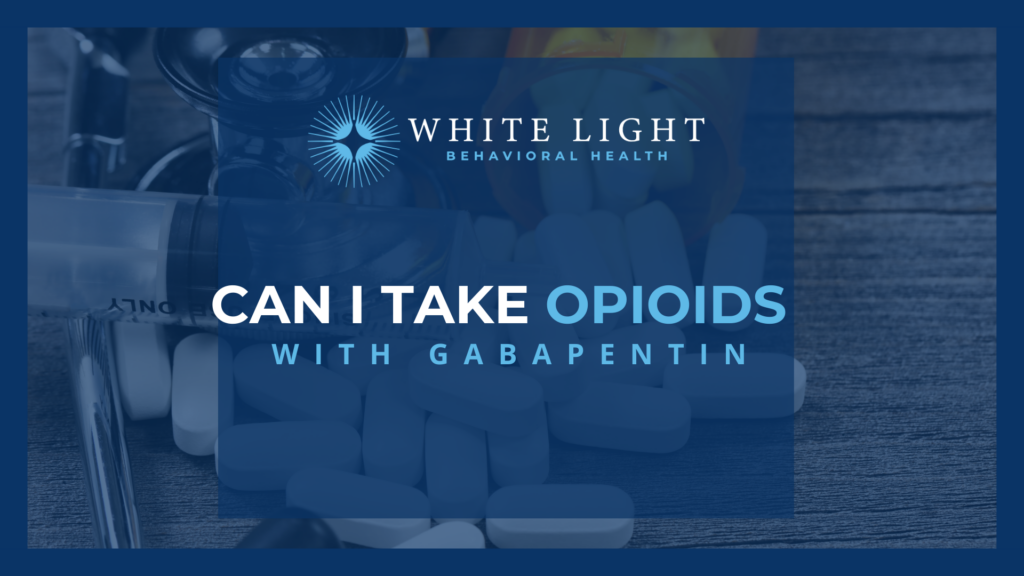Opioids are a class of powerful pain-relieving drugs. Derived from opium or synthesized in laboratories, prescription opioids act on the brain to reduce pain. Initially prescribed for acute and chronic pain management, they possess a high potential for misuse and addiction.
Opioid misuse has reached alarming levels, leading to devastating consequences such as overdoses and fatalities. As per a study by the National Institute of Drug Abuse in 2023, in the United States alone, overdoses involving both illegal drugs and misused prescription opioids claimed a total of 106,699 lives in 2021. Given the significant impact of opioids on society, it is crucial to understand the issues and intricacies connected to opioid recovery.
The Duration of Opioid Recovery
There is no definitive timeline that applies universally since opioid recovery is a complex and individualized journey that varies from person to person. For most individuals, overcoming opioid addiction typically takes a couple of weeks, with the first few days after stopping opioid use being the most challenging. During this period, users experience intense withdrawal symptoms and cravings.
However, with proper support and treatment, many people can navigate through this challenging phase. Ultimately, those who have successfully stayed clean for one to two years are often considered to have fully overcome the addiction since they have demonstrated significant progress in sustaining sobriety and developing healthier coping mechanisms.
Common Types of Opioids
Opioids encompass a diverse range of substances that serve various purposes in medicine.
Oxycodone (OxyContin)
Oxycodone, marketed under the brand name OxyContin, is a potent opioid analgesic that is widely prescribed for the management of moderate to severe pain. It belongs to the class of semi-synthetic opioids derived from thebaine, a component of opium. Oxycodone works by binding to opioid receptors in the brain and spinal cord, reducing pain perception. Due to its high efficacy, OxyContin is commonly prescribed for chronic pain conditions such as cancer, severe injuries, and post-operative recovery. However, its powerful effects also make it susceptible to misuse and addiction. OxyContin misuse has contributed significantly to the opioid crisis, with its extended-release formulation being crushed or dissolved for immediate, intense highs. This has led to an increased focus on regulating its prescribing practices and improving public education about its potential risks and alternatives.
Methadone
This is a synthetic opioid primarily used to treat opioid dependence and addiction. Unlike other opioids, it has a long duration of action, which helps prevent withdrawal symptoms and cravings. Methadone functions by binding to the same receptors as other opioids, effectively reducing withdrawal effects and blocking the euphoric effects of illicit opioids. However, despite its therapeutic benefits, methadone itself can be misused. Some individuals misuse methadone to experience a euphoric high, leading to addiction and potential overdose. Its accessibility in opioid substitution therapy programs poses a risk if not closely monitored.
Morphine
Morphine is a potent opioid analgesic widely recognized for its effectiveness in relieving severe pain. It is derived from the opium poppy plant and is one of the oldest and most commonly used opioids in medical practice. As a full agonist, morphine binds to opioid receptors in the central nervous system, modulating pain signals and inducing a sense of euphoria. Due to its potency, morphine is frequently employed for post-operative pain, palliative care, and terminal illnesses. However, its use is not without risks, including potential side effects such as respiratory depression and constipation. Strict monitoring and proper dosage adjustments are essential when utilizing morphine to ensure safe and effective pain management.
Hydrocodone (Vicodin)
Known by its brand name Vicodin, hydrocodone is a widely prescribed opioid analgesic used for the management of moderate to severe pain. It is a semi-synthetic opioid derived from codeine with potent pain-relieving properties. Similar to other opioids, hydrocodone acts by binding to opioid receptors in the brain and spinal cord, reducing the perception of pain. Vicodin is commonly prescribed for conditions such as dental procedures, injuries, and chronic pain. Its high potential for misuse and addiction has made it a concern in the opioid crisis. Thus, stricter regulations and increased awareness of hydrocodone’s addictive nature are crucial in addressing its misuse and promoting safer pain management alternatives.
Fentanyl
This is a synthetic opioid that is significantly more potent than other opioids. Due to its potency, it is primarily used in medical settings for severe pain management, particularly in cases of cancer-related pain or during surgical procedures. However, fentanyl has become a major concern due to its widespread illicit use. Illegally produced fentanyl, often mixed with other substances, has fueled the opioid crisis, leading to a surge in overdose deaths. Its high potency and availability make it dangerous since even small amounts can have lethal effects.
Symptoms of Opioid Misuse
The misuse of opioids leads to symptoms that vary widely among different people. Generally, opioids can cause a range of physical, psychological, and behavioral effects. Identifying and understanding these symptoms is crucial in recognizing opioid misuse and seeking appropriate intervention and treatment.
Respiratory Depression
This occurs when opioids suppress the central nervous system, specifically the respiratory centers in the brain stem. This effect slows down the rate and depth of breathing, putting individuals at risk of inadequate oxygen supply. Respiratory depression can lead to severe consequences, including respiratory arrest, unconsciousness, brain damage, or even death if not promptly addressed. This symptom is particularly dangerous because it can occur even with prescribed opioid use, especially at higher doses or when opioids are combined with other substances that depress the respiratory system, such as alcohol or benzodiazepines.
Sedation and Drowsiness
Opioids, by their nature, have a depressant effect on the central nervous system, leading to pronounced drowsiness and a strong desire to sleep. This excessive sedation can interfere with daily functioning, impair cognitive abilities, and negatively impact work or school performance. Individuals struggling with opioid misuse may find it challenging to stay awake, often experiencing periods of nodding off or feeling groggy throughout the day. This symptom poses significant risks, especially when engaging in activities that require alertness, such as driving or operating machinery.
Constipation
Opioids can disrupt normal gastrointestinal motility, causing a significant decrease in bowel movements. The drugs bind to opioid receptors in the gastrointestinal tract, leading to reduced peristalsis and increased water absorption in the intestines, resulting in hardened stools and difficulty passing them according to a study by Omeed Sizar published in NLM updated in 2023. Chronic opioid use can exacerbate constipation, leading to discomfort, bloating, and abdominal pain. This side effect can be distressing and impact an individual’s overall well-being.
Euphoria and Excessive Mood Swings
Opioids profoundly impact the brain’s reward system, triggering a surge of dopamine, a neurotransmitter associated with pleasure and reward. According to the US Department of Justice, this flood of euphoria can create intense feelings of happiness, relaxation, and contentment. However, as the effects of opioids wear off, individuals may experience dramatic mood swings switching between extreme highs and lows. This emotional instability can lead to irritability, agitation, and a general sense of dysphoria. The pursuit of this euphoric state often drives continued opioid misuse as individuals seek to re-create the initial pleasurable sensations while grappling with the negative emotional consequences that follow.
Pinpoint Pupils
In cases of misuse, the opioids drastically bind to receptors in the autonomic nervous system. This causes constriction of the muscles in the iris, thereby leading to a noticeable reduction in the size of the pupils. The pinpoint pupils are often described as very small, similar to the size of a pinhead. This physical manifestation can be a reliable indicator of opioid use and can help healthcare professionals identify potential cases of substance misuse.
Factors That Affect the Rate of Opioid Dependency During Misuse
Everyone’s body is unique and interacts with substances like opioids differently. Some individuals may develop tolerance and dependence more rapidly, and others may exhibit slower progression. Understanding these factors is crucial in recognizing the potential risks and tailoring interventions that address the specific needs of individuals grappling with opioid misuse.
The Type of Opioid
Different opioids have varying potencies and pharmacokinetic properties, which can impact their addictive potential. Highly potent opioids like fentanyl, for example, can rapidly lead to severe dependence and addiction due to their intense effects. Additionally, the route of administration, such as injecting opioids intravenously, can also contribute to faster progression as it delivers the drug directly into the bloodstream.
Duration of Use
Prolonged or chronic use of opioids can lead to the development of tolerance, wherein higher doses are required to achieve the desired effects. Extended use also increases the likelihood of physical and psychological dependence, making it harder to discontinue or reduce opioid consumption without experiencing withdrawal symptoms. Furthermore, long-term use can result in structural and functional changes in the brain, reinforcing the addictive cycle. Early intervention and timely cessation of opioid use are crucial in mitigating the risks associated with prolonged use and reducing the likelihood of rapid progression toward addiction and its associated complications.
Dosage
Higher doses of opioids can lead to faster development of tolerance, where the body becomes accustomed to the drug and requires more significant amounts to achieve the desired effects. With continued use of higher doses, individuals may escalate their consumption, increasing the risk of dependence and addiction. Moreover, larger doses increase the likelihood of overdose as they can overwhelm the body’s respiratory system.
Individual Susceptibility
Genetic variations can impact how an individual’s body processes and responds to opioids. A study by Smith HS published in the National Library of Medicine shows that Enzymes involved in opioid metabolism, such as cytochrome P450, can exhibit genetic variations, leading to variations in drug clearance rates. Some individuals may metabolize opioids faster or slower, affecting the duration and intensity of the drug’s effects. Additionally, genetic factors can influence the likelihood of developing opioid use disorder.
Treatment Options for Opioid Misuse
There are a range of approaches to address the different aspects of addiction. These intervention options are crucial in combating the opioid crisis and supporting individuals on the path to recovery.
Medication-Assisted Treatment (MAT)
This option involves using medications, such as methadone, buprenorphine, or naltrexone, in combination with counseling and behavioral therapies. These medications help manage withdrawal symptoms, reduce cravings, and stabilize individuals, allowing them to focus on their recovery journeys. Methadone and buprenorphine act as opioid agonists or partial agonists, providing a controlled, safer substitute for opioids. Naltrexone, on the other hand, blocks the effects of opioids, preventing relapse.’
Cognitive Behavioral Therapy (CBT)
CBT focuses on identifying and modifying negative thought patterns, beliefs, and behaviors that contribute to substance misuse. Through CBT, individuals learn coping strategies, problem-solving skills, and relapse prevention techniques to manage cravings, handle triggers, and develop healthier alternatives to drug use. It also addresses co-occurring mental health conditions often associated with opioid misuse. By promoting self-awareness, self-control, and positive behavioral changes, CBT empowers individuals to overcome challenges, build resilience, and sustain long-term recovery from opioid misuse.
Residential or Inpatient Treatment
In this setting, individuals reside in a specialized facility, receiving 24/7 medical care, counseling, and structured programming. Julia Childs Heyl’s study, as reported in Very Well Mind noted that Inpatient treatment typically includes detoxification, therapy sessions, group activities, and educational workshops to address the physical, psychological, and social aspects of addiction. This immersive environment provides a safe and supportive space for individuals to focus solely on their recoveries without the distractions and triggers of the outside world.
Outpatient Treatment
The outpatient treatment approach allows individuals to attend counseling, therapy sessions, and medication management appointments on an outpatient basis. The programs typically offer a range of services tailored to individual needs, including individual counseling, group therapy, relapse prevention strategies, and education about addiction and recovery. This approach allows individuals to receive treatment to address their opioid misuse and make positive changes in their lives while living at home and continuing with work, school, or other obligations.
Support Groups and Peer Support
Participating in support groups offers a supportive community of individuals who have experienced similar struggles and understand the challenges of addiction. These groups provide a safe space to share experiences, gain insights, and receive guidance from peers who are on a similar recovery journey. According to a report of Mind in July 2019, Peer support fosters a sense of belonging, reduces feelings of isolation, and offers encouragement and accountability. By connecting with others who have faced similar challenges, individuals in recovery can find strength, inspiration, and valuable strategies to navigate the complexities of opioid misuse and maintain long-term sobriety.
Opioid drug misuse can have far-reaching and devastating effects on both the individual using the drugs and those around them. The physical, psychological, and social consequences can be severe, leading to health complications, strained relationships, financial hardships, and legal issues. Therefore, overcoming opioid misuse requires comprehensive support and professional help. Seeking assistance is not a sign of weakness but a courageous step toward healing and recovery.
At White Light Behavioral Health, we understand the complexities of opioid addiction and offer specialized opioid recovery services. With our state-of-the-art facility and highly trained staff, we are committed to providing personalized care and empowering individuals to reclaim their lives. If you or someone you know is struggling with opioid misuse, please don’t hesitate to reach out.
How do opioids affect the brain and body?
Opioids bind to receptors in the brain and body, blocking pain signals and releasing dopamine, causing feelings of pleasure and relaxation. Long-term use can lead to physical dependence, tolerance, and addiction.
What are the common signs and symptoms of opioid addiction?
Signs of opioid addiction include cravings, mood swings, withdrawal symptoms, neglecting responsibilities, and using opioids despite negative consequences. Physical signs may include drowsiness, constipation, and pinpoint pupils.
How does opioid tolerance develop over time?
With regular opioid use, the body adjusts to the drug, requiring higher doses to achieve the same effects. This is known as tolerance. Over time, tolerance can lead to an increased risk of overdose and dependence.
Is there a relationship between opioid addiction and chronic pain?
Chronic pain occasionally leads individuals to turn to opioids, which could potentially result in addiction. The effective management of chronic pain necessitates a thorough approach that explores alternative treatments and strategies for pain relief without relying on opioids.
What are the potential long-term effects of opioid abuse?
Long-term opioid abuse can lead to respiratory depression, liver damage, decreased immune function, hormonal imbalances, and increased risk of infectious diseases such as HIV and hepatitis.
How can I support a loved one struggling with opioid addiction?
Supporting a loved one with opioid addiction involves educating yourself about addiction, encouraging treatment, providing emotional support, and setting boundaries. It’s also essential to practice self-care and seek support from others.
What alternative treatments are available for chronic pain besides opioids?
Alternative treatments for chronic pain include physical therapy, acupuncture, chiropractic care, cognitive-behavioral therapy, exercise, and non-opioid medications like NSAIDs and antidepressants.
Is it possible to manage chronic pain without opioids?
Yes, chronic pain can be managed effectively without opioids through a combination of alternative treatments, lifestyle modifications, and non-opioid medications. It’s essential to work closely with healthcare providers to develop a personalized pain management plan.
How can I safely dispose of unused opioids?
Unused opioids should be disposed of properly to prevent misuse or accidental ingestion. Many pharmacies, hospitals, and police stations offer drug take-back programs. If a take-back program isn’t available, opioids can be disposed of in the household trash following specific guidelines to make them unusable.
Can opioids be taken alongside Gabapentin?
Combining opioids with Gabapentin heightens the risk of respiratory depression and overdose. It’s crucial to seek guidance from a healthcare professional before using these medications together and to adhere strictly to prescribed dosage instructions.

Share This Post



